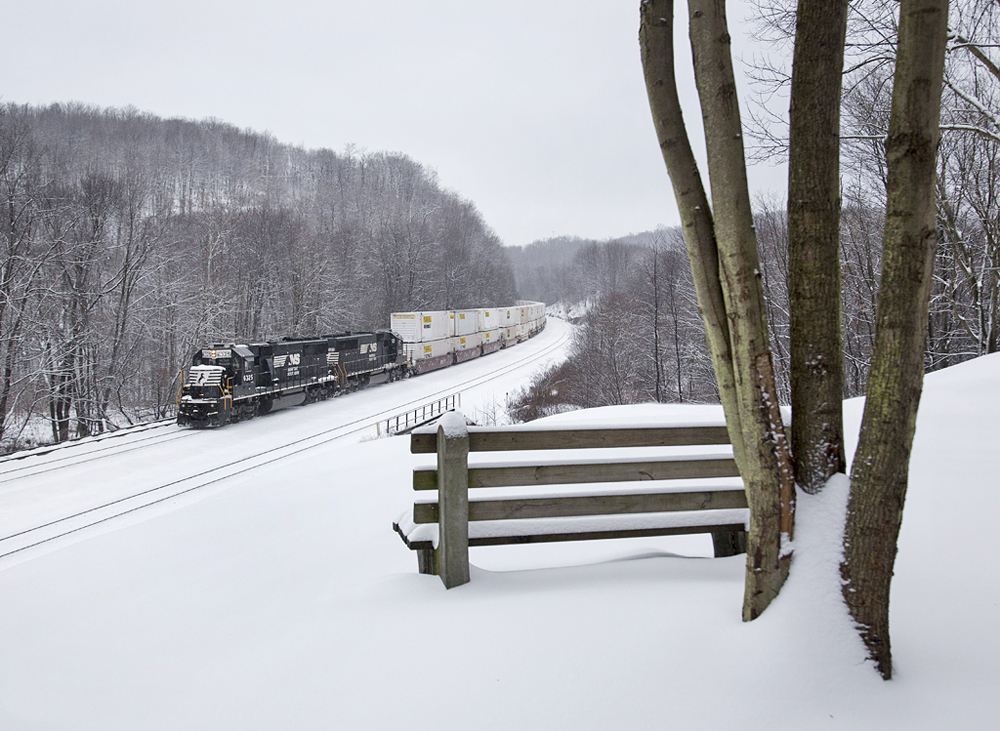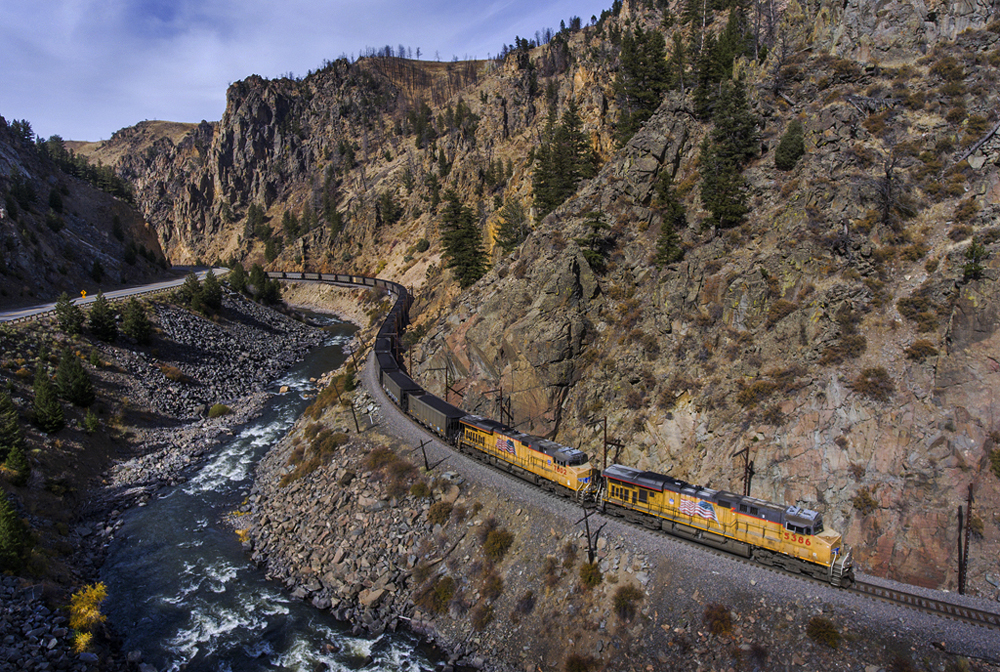
CHARLESTON, W.Va. — Railroads are moving more traffic than a year ago, but investors aren’t piling into railroad stocks. The stock prices of four of the five Class I railroads trading on the New York Stock Exchange are down this year despite railroads’ volumes being flat, or up slightly, through the first half of 2024 compared to a year ago, according to weekly carload data compiled and published by each railroad.
CSX Transportation, Norfolk Southern, Union Pacific, Canadian National, and Canadian Pacific Kansas City, the five publicly traded Class I railroads, finished the second quarter with lower share prices than at the start of the New Year, despite four of those ]railroads seeing a rise in traffic over the same period.
It’s imperative to note that a volume increase doesn’t guarantee increased profitability, or that railroads generated more net income through the first half of the year because of a bump in volume. Those financial details, including average revenues per carload, will be fleshed out when the railroads share their second quarter earnings in the weeks ahead.
But what we can say is that rail traffic, notably intermodal, is up across most railroads, but it isn’t getting the attention of investors.
Norfolk Southern stock finished the second quarter down 8%, but its overall volumes are up 3% year-over-year. Intermodal traffic is up 7% and merchandise is nearly flat, up less than 1%. The railroad’s coal business is down 3%.
Shares of Union Pacific finished the second quarter down 7% on mostly flat volume. Intermodal is up 3%, but merchandise traffic is down 3%. UP has moved about 88,000 fewer coal carloads compared to this time last year — a 22% drop.
Canadian National’s stock was down 5% at the end of June with volumes up less than 1%. Like its peers, intermodal business is up, increasing 5% year over year. Merchandise traffic is down less than 1% and coal is down 14%.
CSX shares closed the second quarter 3% below where they started the year, even though the railroad’s traffic is up 2% year over year. CSX has seen a 5% increase in intermodal and its merchandise business, like NS and CN, is down less than 1%. CSX’s coal franchise is down 1% for the year, a difference of about 6,000 carloads, despite a closure to the Port of Baltimore that curbed export shipments through the port in the second quarter.
Canadian Pacific Kansas City finished June with shares losing less than 1% from the start of the year. Its business is the only Class I to see a year-over-year decrease in volume with total traffic down 4% at the end of June. Intermodal is down 7% and all other carloads are down 1%, including coal, posting a 10% decrease from a year ago.
Asked why railroad stock prices and volumes are moving in opposite directions, independent analyst Anthony B. Hatch says the industry is still in or just exiting a freight recession and railroads’ coal business is significantly down.
Combining the coal traffic of each of the five publicly traded Class I railroad reveals that through the first half of the year, these railroads hauled 160,000 fewer coal carloads, a decrease of 10%. Union Pacific alone shipped 80,000 fewer carloads in the first six months of 2024 compared to a year ago.

In addition to coal’s decline, Hatch says there are no signs of an economic inflection, but notes that railroads are continuing to right the service ship by providing better and more reliable service to its customers.
As earnings get closer, railroad stocks have slightly improved in the first two weeks of July. Shares of Canadian Pacific Kansas City have gained 7% so far this month, making it the only railroad whose stock is now higher than at the start of 2024 – up 5% from January.
Kicking off the third quarter, Norfolk Southern and Canadian National shares have gained 3%, Union Pacific up 2%, and CSX has added less than 1%, however shares of each are still down year-to-date as of Friday, July 12.
What merchandise traffic is driving volume gains?
Using the most recent weekly carload data comparing year-over-year volumes, the biggest percentage gainers across different commodity groups at each of the publicly traded Class Is is mixed.
CSX’s petroleum business is up 16%; farming products, excluding grain, up 10%, and primary forest products up 9%. Nine of the 20 commodities recognized by CSX are up.
Norfolk Southern’s primary forest products business is up 20%; waste and scrap up 7%; and lumber and wood is up 5%. 12 out of 18 commodities are ahead of last year.
Union Pacific’s petroleum products franchise is up 12%; metallic ores up 9%; and pulp, paper and allied products up 8%. 12 of its 20 carload groups are outperforming last year.
Canadian National’s crushed stone business is up 13%; stone, clay, and glass up 10%, and petroleum products and food and kindred products are each up 6% year-over-over. 10 of its 20 commodities are ahead of last year’s volumes.
And at Canadian Pacific Kansas City, primary forest products are up 27%; metallic ores up 22%, and iron and steel shipments are up 16%. Eight of the 20 commodity groupings at CPKC are outperforming last year.
It’s unclear if some of these volume gains are the result of railroads’ concentrated efforts to improve service and dependability, and hire more workers, or if macroeconomic headwinds are waning, or a combination of both.
Hatch says what matters most in upcoming earnings reports will be commentary from the railroads.
CN will kick off second-quarter financial reporting on July 23, followed by NS and UP on July 25, CPKC on July 30, and CSX on Aug. 5.














Their pvot to PSR drove a ton of customers to trucks.
It could also be that investors are simply worn out from all the railroad industry silliness of the past 18 months and have decided to take a well-deserved break from the turmoil.
A very speculative and uneducated guess here. I wonder if, given the enormous ignorance of most folks, including investors, about railroads, if stock purchases are mostly driven by what the supposed “serious and smart people” say. For instance, do most investors even know what OR is based on? Do they understand carload versus intermodal volume? Or do they buy on decreased OR and sell on increased OR because they think that is what they are supposed to do? Opinions welcomed!
Since railroads are owned primarily by investment funds, they have people who break down the numbers, sometimes critically, sometimes less so, to make market decisions.
Individuals may own via their personal investment accounts or through a self directed IRA or a 401/403 plan.
Some may be lazy and only listen to shareholder calls or read a Tony Hatch newsletter once in awhile. Others may get down and look at the details and compare it to certain market conditions.
Most invest firms today use large tools to analyze the RR numbers and using linear programming, will examine how certain commodity prices benefit or diminish RR profits.